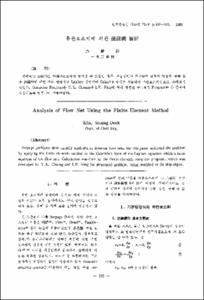A Reexamination of "Double-Subject" in Korean
- Alternative Title
- 국어의 이중주어 再論
- Abstract
- 논문은 국어의 이중주어 문제를 Dik(1978)의 틀(framework)에 의하여 분석, 설명할 수 있음을 보이고 타당성을 제시하는데 목적이 있다.
이중주어 현상에 대한 문제는 그동안 학계의 꾸준한 관심과 논란의 대상이 되어 왔다. 대체로 말해서 변형문법의 출현이전에는 국어는 표면 구조에 나타난대로 이중주어를 가진 언어라는 주장이 지배적이었고 변형문법의 출현 이후에는 표면구조의 이중주어 현상은 심층구조의 단일 주어의 변형일 뿐이라고 주장 왔다.
논문은 종래의 주장과 다음과 같이 입장을 달리하고 있다.
1. 국어의 주어는 많은 자연언어와 마찬가지로 하나라고 가정한다.
2. 변형에 의한 분석방법은 표면구조에 나타나는 미묘한 의미의 차이를 포착하지 못 할 뿐만 아니라 본질적 문제의 해결에 도움을 주지 못한다.
3. 주어란 복합 요인 개념(multi-factor concept)이라고 가정한다.
Dik(1978)의 틀(framework)이 위의 주장에 대한 지지의 증거로 사용되고 다른 증거들 도 제시될 것이다.
This paper aims to analyze the so-called Korean double-subject constructions according to Dik's(1978) framework and to show the adequacy of our analysis.
The so-called Korean double-subject construction has been the object of persisting interest and argumentation in the literature. Roughly speaking, before the appearance of transformational grammal. the argument that Koran has double subjects had prevailed and after that, the that argument that double-subject construction in the surface structure is the transformation of single-subject construction in the deep structure is prevailing.
This paper differs from the previous treatments as follows:
(1) Korean has a single subject as many natural languages do.
92) Transformational analysis not only fails to capture the subtle meaning differences in the structure, but is not helpful in solving the problem of double-subject constructions.
(3) We hypothesize that subject is a multi-factor concept.
Dik's(1978) framework will be partially used to support our arguments and other evidence to support them will be presented.
This paper aims to analyze the so-called Korean double-subject constructions according to Dik's(1978) framework and to show the adequacy of our analysis.
The so-called Korean double-subject construction has been the object of persisting interest and argumentation in the literature. Roughly speaking, before the appearance of transformational grammal. the argument that Koran has double subjects had prevailed and after that, the that argument that double-subject construction in the surface structure is the transformation of single-subject construction in the deep structure is prevailing.
This paper differs from the previous treatments as follows:
(1) Korean has a single subject as many natural languages do.
92) Transformational analysis not only fails to capture the subtle meaning differences in the structure, but is not helpful in solving the problem of double-subject constructions.
(3) We hypothesize that subject is a multi-factor concept.
Dik's(1978) framework will be partially used to support our arguments and other evidence to support them will be presented.
- Issued Date
- 1982
- Type
- Research Laboratory
- Publisher
- 연구논문집
- Language
- eng
- Rights
- 울산대학교 저작물은 저작권에 의해 보호받습니다.
- Citation Volume
- 13
- Citation Number
- 1
- Citation Start Page
- 239
- Citation End Page
- 250
- Appears in Collections:
- Research Laboratory > University of Ulsan Report
- 파일 목록
-
-
Download
 000002024576.pdf
기타 데이터 / 209.84 kB / Adobe PDF
000002024576.pdf
기타 데이터 / 209.84 kB / Adobe PDF
-
Items in Repository are protected by copyright, with all rights reserved, unless otherwise indicated.